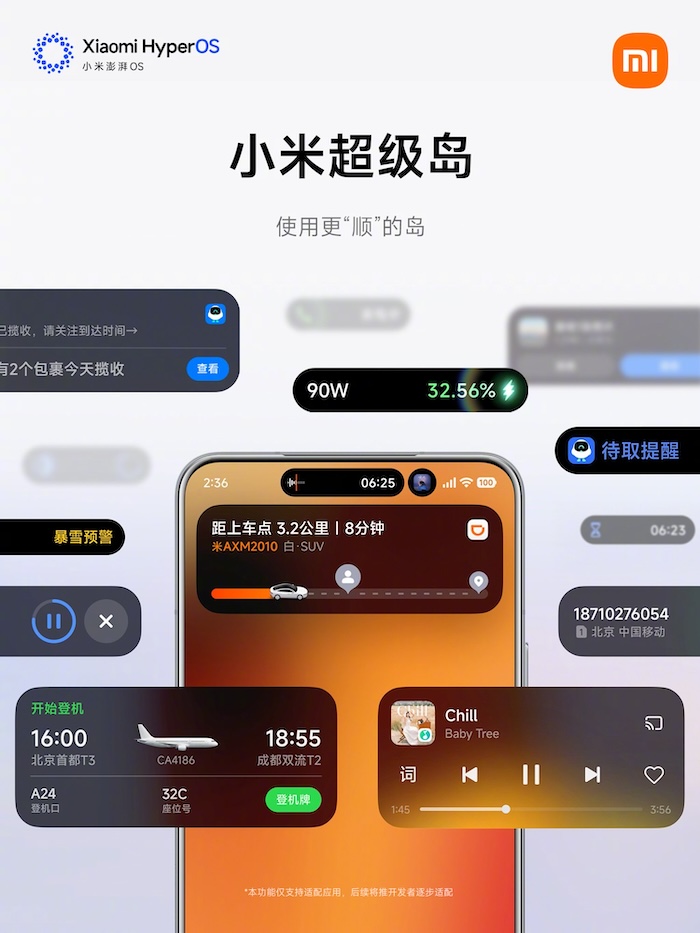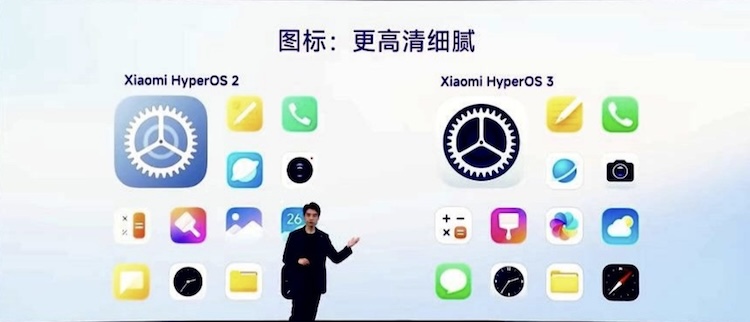Xiaomi has introduced HyperOS 3 in China. This is the company’s latest software update and also the first big smartphone OS launch of the year. HyperOS 3 is built on Android 16 and has arrived earlier than expected. Xiaomi did not wait for a new flagship launch and decided to announce the OS on its own.
The company highlights smoother animations, smarter AI, and better integration across devices. But in reality, HyperOS 3 feels like a refined version of HyperOS 2 rather than a completely new experience.
Here are the most notable changes in HyperOS 3.
Super Island: Xiaomi’s own Dynamic Island
The most talked-about feature of HyperOS 3 is Super Island. This sits at the top of the display and expands to show real-time updates. It can display flight information, cab bookings, music controls, messages, timers, and navigation details.
At first glance, it looks very close to Apple’s Dynamic Island. The design and even the name leave little doubt about the inspiration. However, there is one small difference. Xiaomi’s Super Island also appears in the notification tray, which adds another layer of usability.

Fresh icons and redesigned interface
Xiaomi has also given parts of the UI a visual refresh. Icons have been redesigned, the status bar has been updated, and home screen grids are now more flexible. The icons look very similar to those seen in iOS 18, and the status bar also borrows from Apple’s design.

Lock screen customization has improved a lot. Users can now try AI wallpapers, cinematic effects, and a new centered clock. A built-in editing tool makes customization easier. The control center has also been reworked. With rounded toggles and colors matching iOS 18, it is hard not to notice the similarities.
System apps and Photos app upgrades
Many system apps now have refreshed icons. The dialer app has larger icons for easier navigation. The new Photos app has been redesigned with a better layout. It supports custom sorting on both the homepage and the albums page.
One of the most interesting additions is the ability to paste photos and videos directly into another person’s album. Xiaomi has also made cross-platform transfer possible. Photos can now be pasted from a Xiaomi device into an iPhone. The camera app also gets new watermark styles to make shots stand out.
AI gets deeper integration
Xiaomi is bringing its Super Xiao AI deeper into HyperOS 3. The AI can recognize content, offer smarter suggestions, and enhance the camera experience. Portrait shots transition more smoothly, zoom feels more natural, and Leica-powered Xiaomi phones get special editing options with improved colors.
The downside is that these AI features may remain limited to China, as seen with earlier versions of HyperOS.
Privacy improvements
Privacy gets some attention, too. HyperOS 3 introduces dual authentication for added security, stronger encryption, and safer logins across multiple devices. These updates may not sound very big, but they do add an extra layer of safety for users.
Performance and ecosystem expansion
Xiaomi claims to have optimized more than 100 animations. The company says system efficiency is better, especially on devices with its own chips, such as the Xiaomi 15T Pro. While the company promises a more fluid experience, we will have to wait for real-world testing to know if these improvements are truly noticeable.
The Xiaomi ecosystem is also expanding. Notifications can now sync across platforms. Photos can be pasted directly between Xiaomi devices and iPhones. You can even unlock a Mac or iPad using a Xiaomi smartphone.
Rollout schedule
The beta rollout for HyperOS 3 starts in China today. The first batch of supported devices includes:
- Smartphones: Xiaomi 15, 15 Pro, 15 Ultra, 15S Pro, Redmi K80 Pro, K80 Extreme Edition, Redmi Note 14 series, POCO F7 models
- Tablets: Xiaomi Pad 7 Pro, Pad 7S Pro 12.5
Other devices like the Mix Flip 2, Mix Fold 4, and the Xiaomi 14 series will join the beta in September. A wider beta rollout will continue until the end of September.
Xiaomi says the stable rollout will begin in Q4 2025 in China. A global release timeline has not been shared yet, but based on past rollouts, India may only get HyperOS 3 in early 2026. Also, not all AI features are expected to make it outside China.



